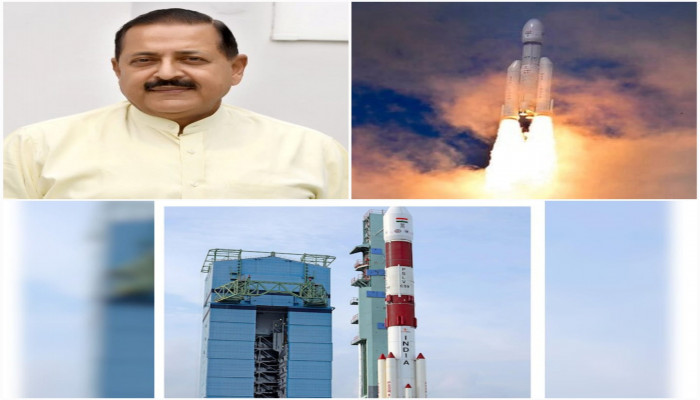ISRO's Chandrayaan-4 mission set for 2027 to bring moon samples to earth: Minister Jitendra Singh
- In Reports
- 06:42 PM, Feb 06, 2025
- Myind Staff
India plans to launch the Chandrayaan-4 mission in 2027, marking a major milestone in the country's space exploration journey. Science and Technology Minister Jitendra Singh has confirmed that the mission's objective is to gather lunar samples and bring them back to Earth.
This ambitious endeavour will involve at least two launches of the heavy-lift LVM-3 rocket, which will transport five key components of the mission. These modules will be assembled in orbit before proceeding to the Moon. As India's first attempt at a sample return mission, Chandrayaan-4 represents a significant leap in the nation’s scientific and technological advancements in space exploration.
In an interview with PTI, Singh said, “The Chandrayaan-4 mission aims to collect samples from the Moon’s surface and bring them back to Earth”.
Along with the Chandrayaan-4 mission, the space agency of India, the Indian Space Research Organisation (ISRO), has lined up a busy schedule for the coming years. Also, the much-awaited Gaganyaan mission, aimed at sending Indian astronauts to low-Earth orbit and safely returning them, is scheduled to launch next year. Later this year, a crewless test mission will launch, featuring the humanoid robot ‘Vyommitra’ as a precursor to the main event.
In 2026, India will take on another remarkable mission with the launch of Samudrayaan. As part of this initiative, three scientists will descend 6,000 meters into the deep ocean using a specially designed submersible. The mission aims to explore the seabed, potentially uncovering valuable mineral deposits, rare metals and new marine species.
During his Independence Day speech, Prime Minister Narendra Modi underscored the significance of Samudrayaan, highlighting its potential to boost India’s economy while ensuring environmental sustainability.
India’s space sector has grown rapidly over the last decade, driven by infrastructure development and increased private sector participation. Although ISRO was founded in 1969, it took over 20 years to build its first launch pad in 1993, followed by a second in 2004. However, the past ten years have witnessed significant advancements, including constructing a third launch pad for heavier rockets and a new small satellite launch facility in Tamil Nadu’s Tuticorin district.
Currently valued at $8 billion, India’s space economy is expected to surge to $44 billion within the next ten years.







Comments